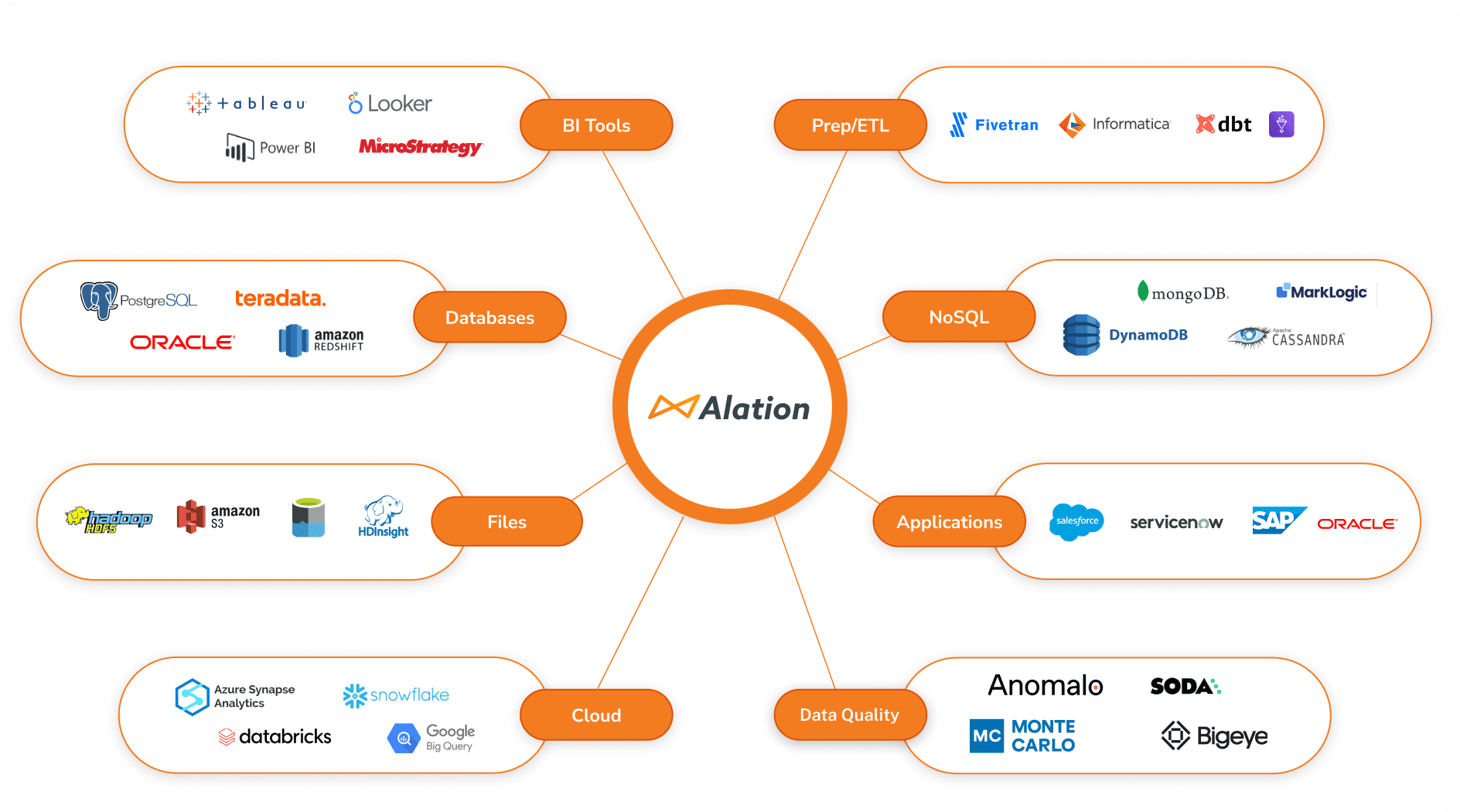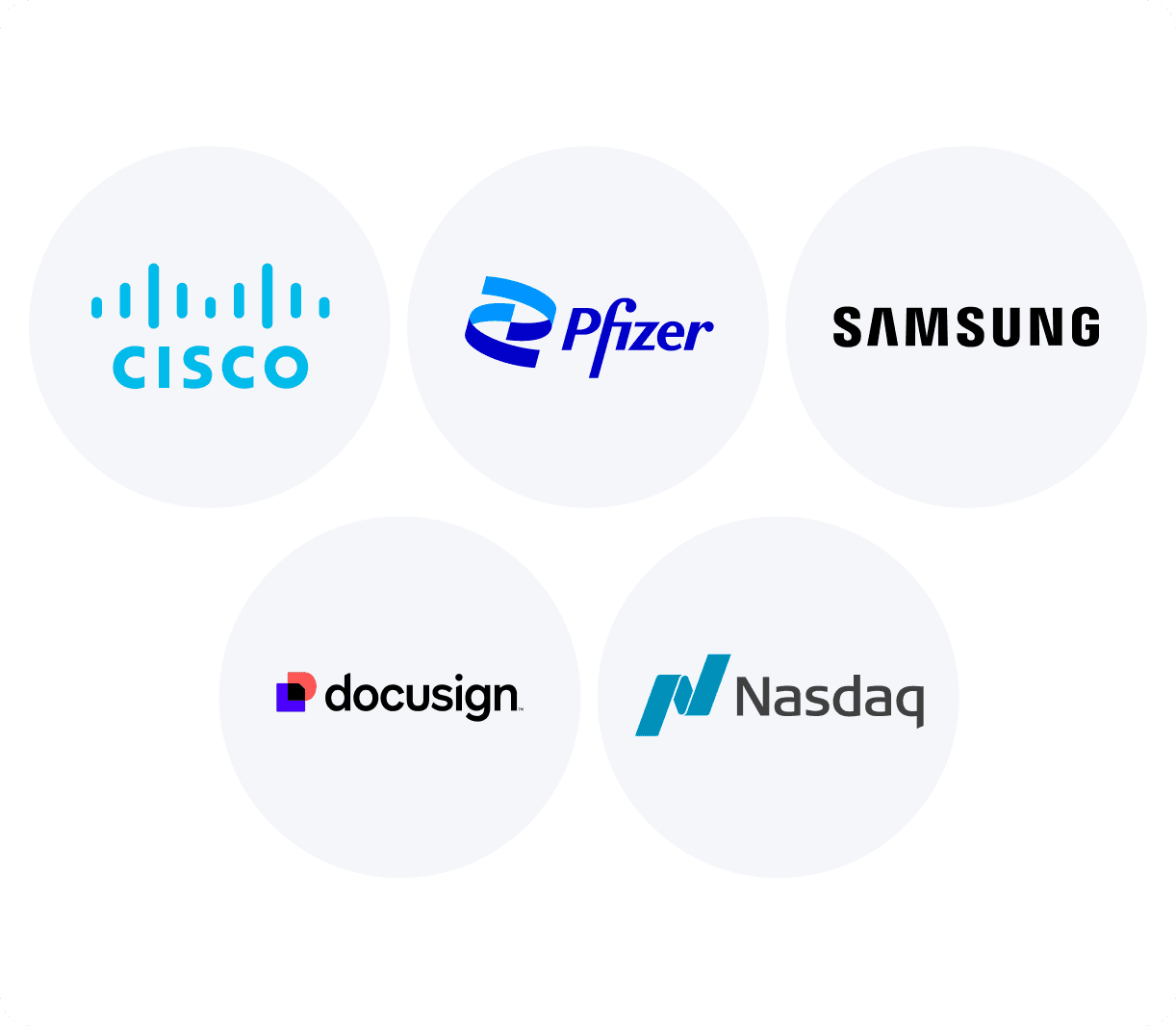
Trusted by 40% of the Fortune 100
Give your teams instant access to the data they need
To make smart decisions, your teams need quick access to reliable data. But when your datasets, reports, and other assets are spread across environments, it can take days to hunt down the right information.
Bring all your data together with Alation. Now everyone — from data teams to business users — has instant access to the information they need.
A powerful search engine for all your data
Find the right data
As you search, the catalog surfaces your company’s most popular data assets. There’s no need to know technical jargon or specific keywords — the catalog uses machine learning to interpret natural language and pinpoint the right data for every search.
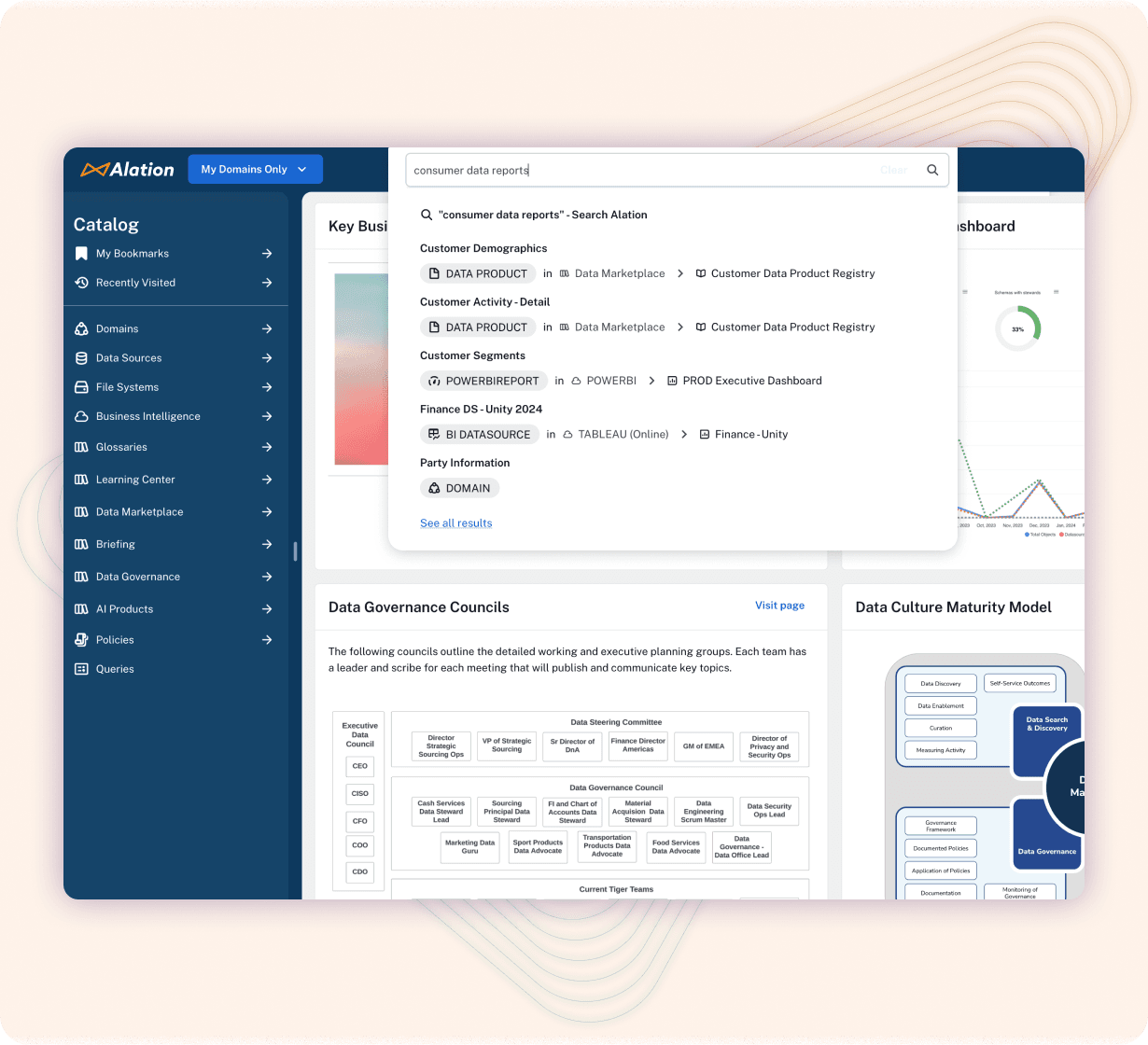
Understand how to use your data
See descriptions, terms, definitions, policies, documentation, and links to each asset’s data source. Now you don't have to guess what each asset is, or how to use it properly.
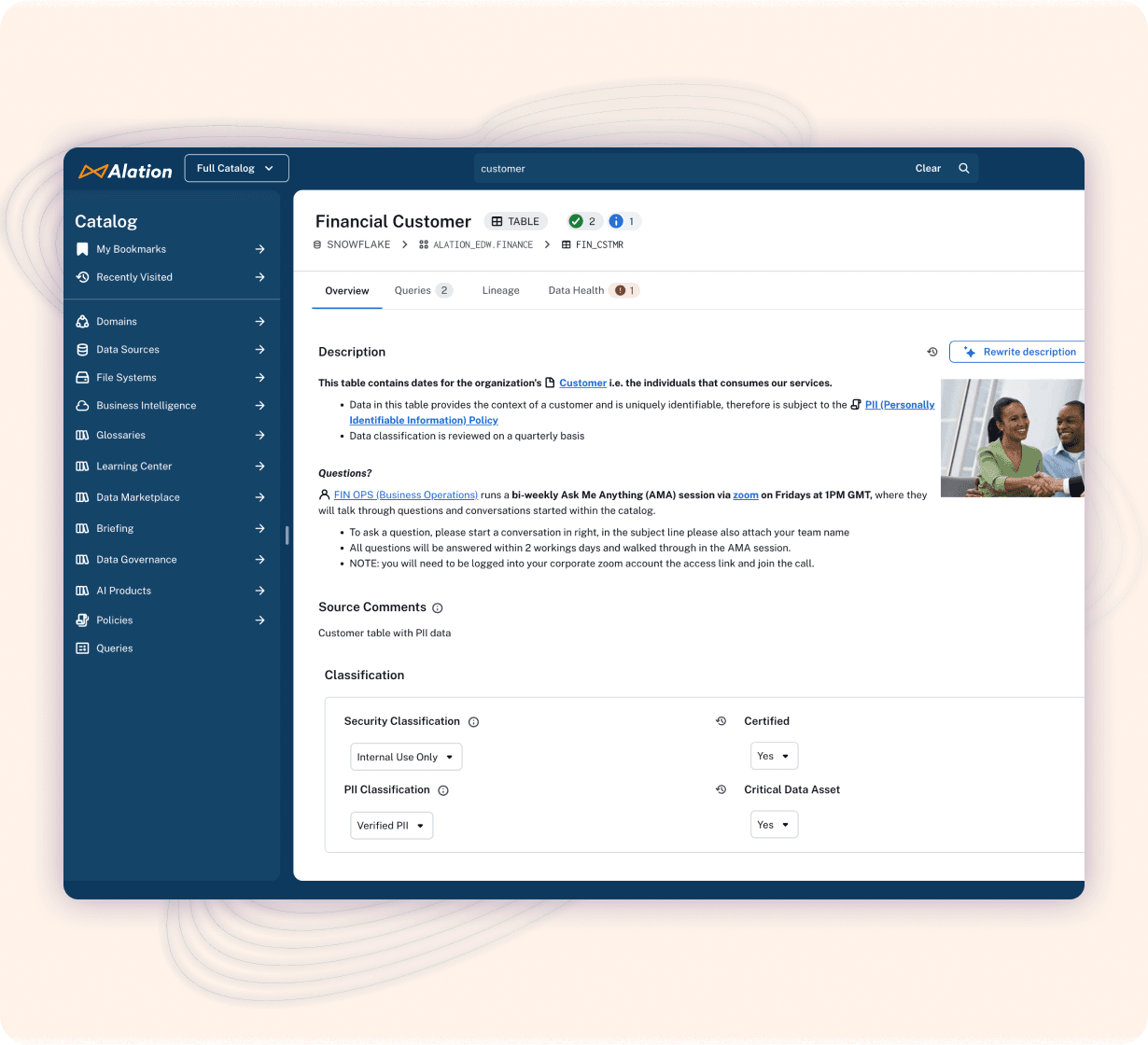
Trust your data
View lineage, tags, quality, trust flags, endorsements, and comments from other users. Now you know how reliable each asset is at a glance.
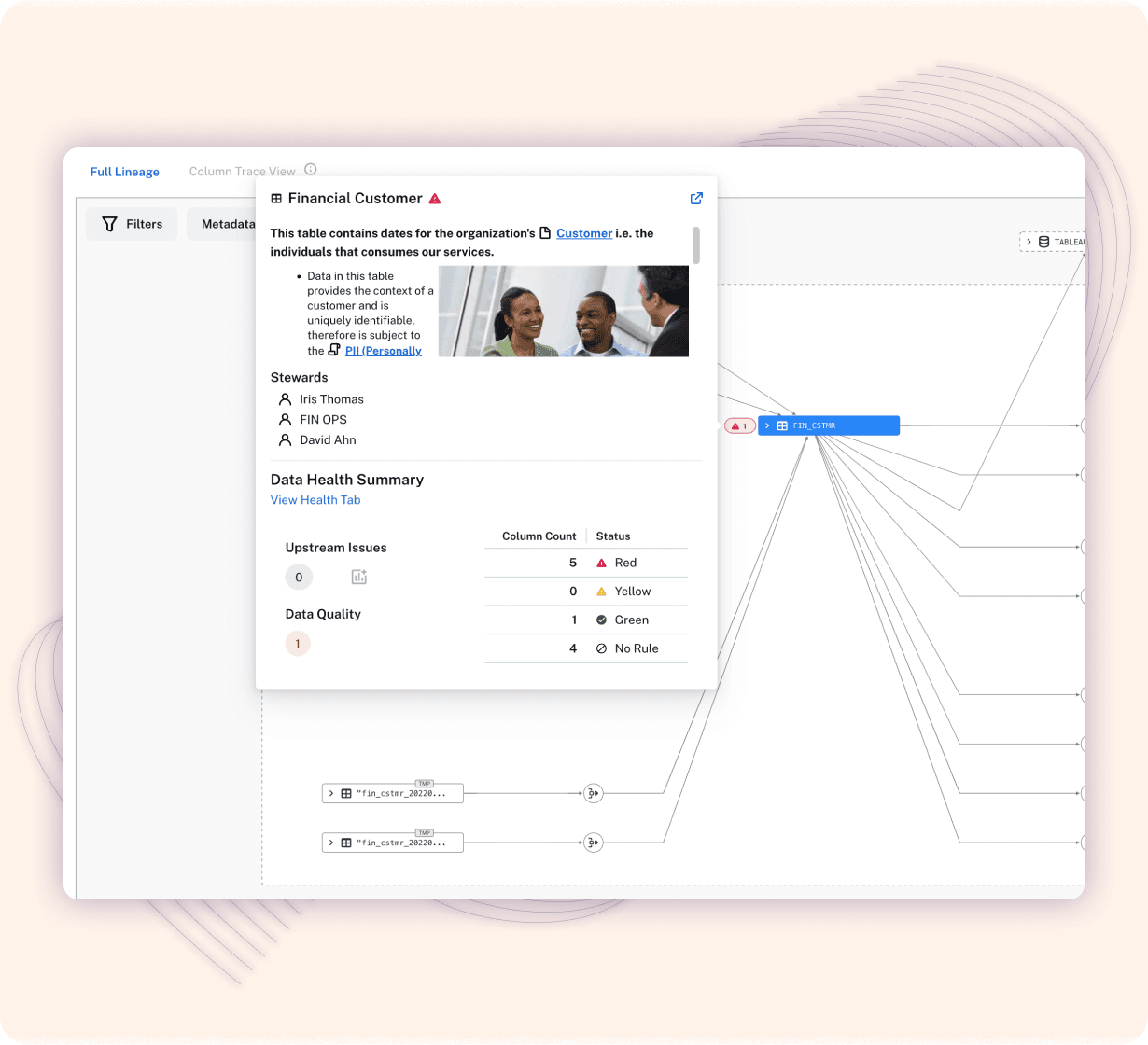
Put your data to good use
Bring Alation into Excel, Slack, and other tools where you need to use the latest data. Now every user can find, understand, and trust governed data.
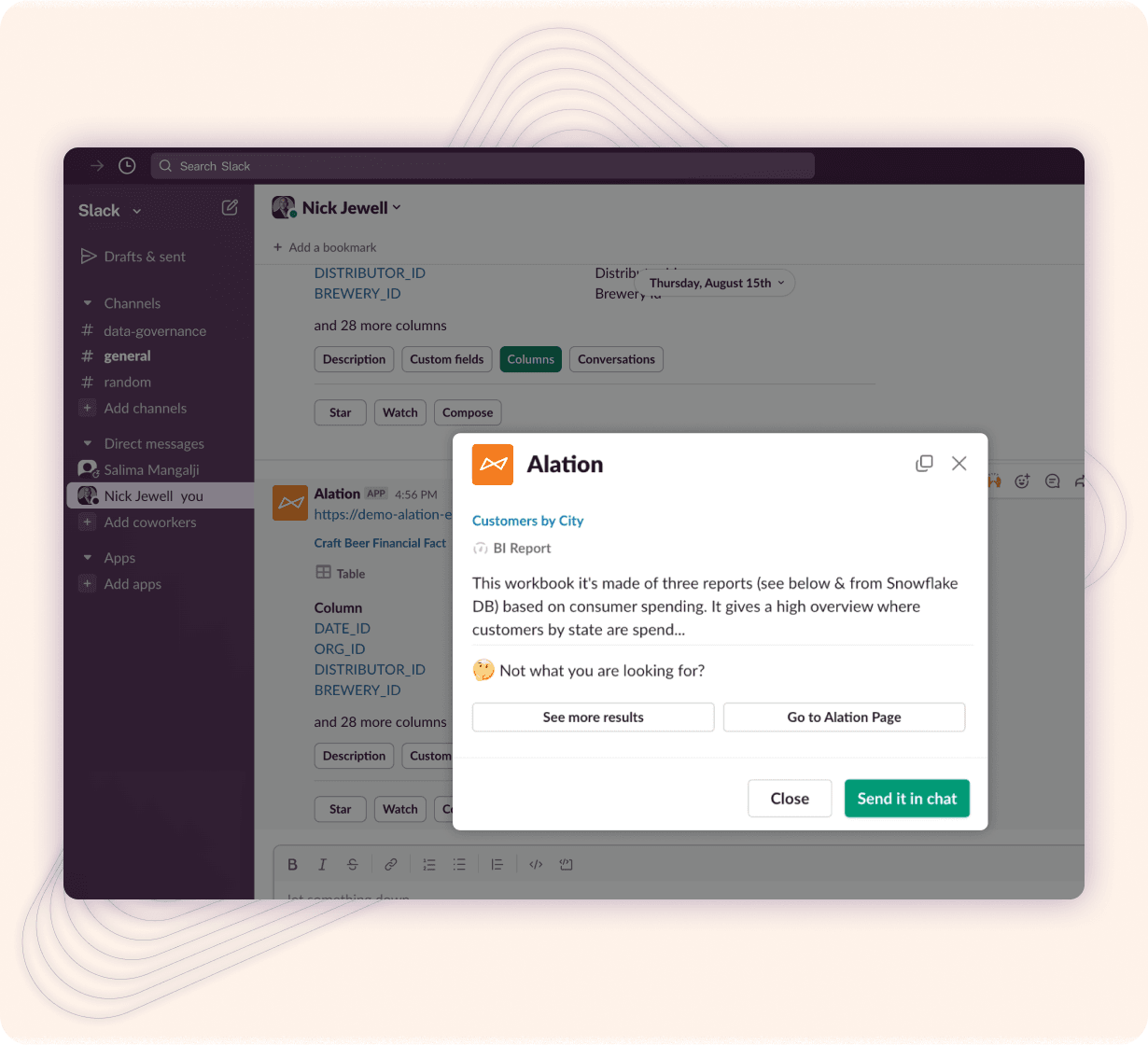


"Everything is just right there at your fingertips. You can perform a keyword search on a term that you heard in passing and learn more about that data. It's kind of like performing a Google search on the data within your company. It makes finding things very, very simple."

Break down silos. Build collaboration.
Data silos keep valuable knowledge from being shared across teams. With Alation, everyone can see:
What data you have
Where your data lives
How to use your data
How trustworthy your data is
And much more

So much data. One solution: automation.
Power your data fabric with active metadata
Stop stitching data together manually. The catalog auto-extracts and integrates metadata from each source into your data fabric.
Automate pipeline code
Optimize your data processes. With active metadata, accelerate your organization’s data fabric and enable data pipeline code generation.
No more delays
These features ensure your teams can access the latest data without waiting days for updates.

"Data documentation used to be a laborious process... Today, the data discovery process takes as little as 15 minutes instead of up to 2 days."
Give data teams the power they want. Deliver simplicity for business teams.
Automate data management
Automatically add new data assets to the catalog as they’re created. Workflow Automation improves metadata quality, consistency, and compliance.
View data lineage end-to-end
See your data’s journey from source to destination, including everything that’s happened along the way.
Curate your catalog with AI
Let ALLIE AI recommend metadata descriptions and help them efficiently populate your data catalog with Intelligent Curation and AI assistance.
Share your best SQL queries
Write better SQL with Compose. Share and reuse the best queries across teams — even non-technical ones — to speed up everyone’s data work.
Connect to any data quality tool
Integrate with your favorite data quality software using Alation’s Open Data Quality Framework. Alation aggregates the results into a single system of record so you can see everything in one place.
Bring data into your favorite tools
Let teams bring trustworthy data into the apps they use daily with Alation Anywhere. Search, share, and take action on data assets within Excel, Teams, Slack, and more.
Track data usage
Tracking the value of data products is key, especially if you use a data mesh approach. Discover which data products are most popular and which are safe to retire with Alation Analytics.
Govern data across your org
Ensure compliance with a people-first approach to governance that helps users handle data properly instead of penalizing them for mistakes.
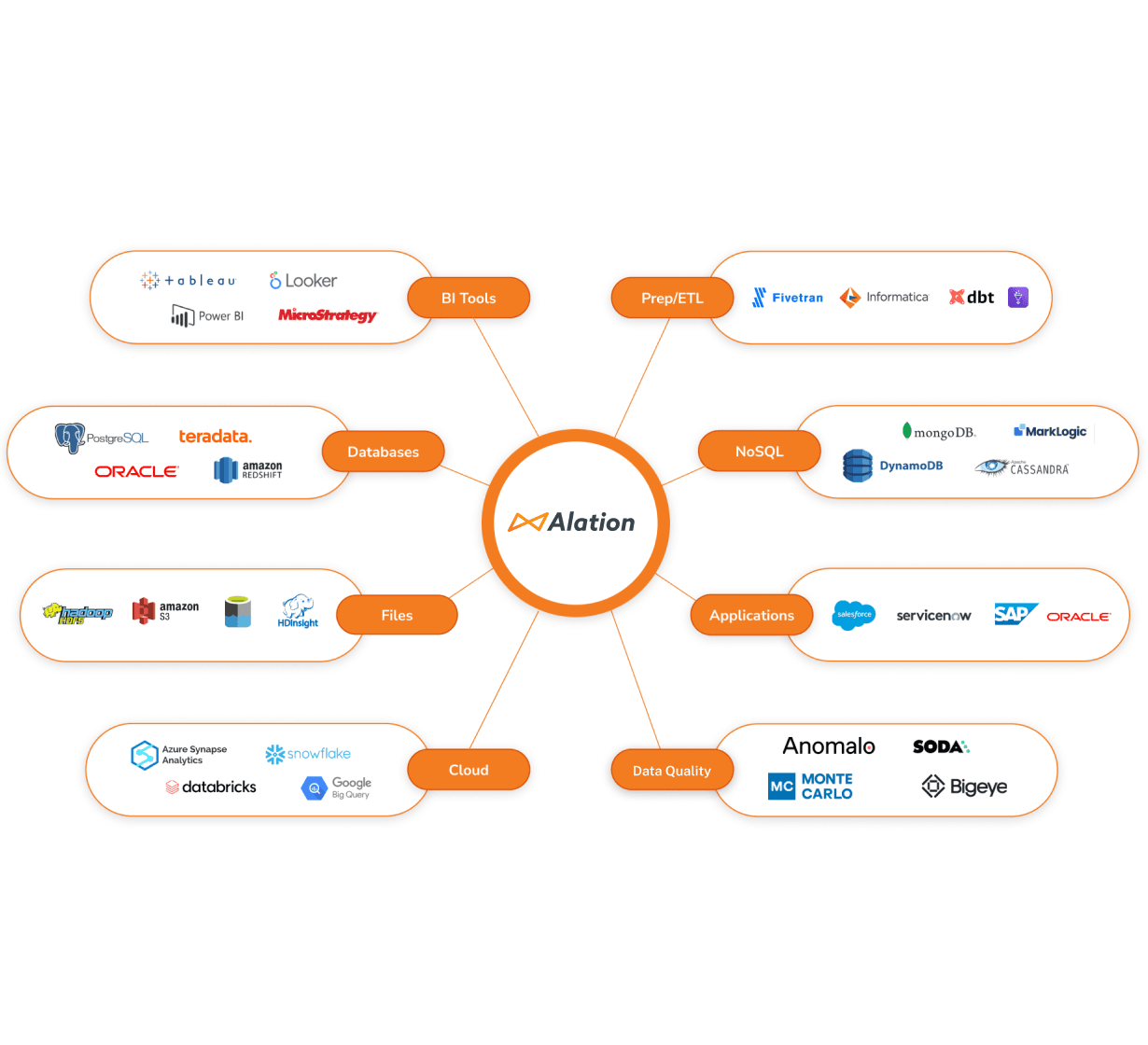
Easy deployment. Fast ROI.
Simple integrations for IT
Get 120+ pre-built connectors to data sources, BI systems, file systems, applications, and more.
Jumpstart your project with our Right Start program
Our experts guide the way with specialized programs for self-service analytics, cloud modernization, and data governance.
Grow adoption with expert guidance
Gain access to a team of data experts who help you every step of the way, from onboarding to organization-wide use.
A national retailer saved nearly $5 million with Alation
50,268
Search hours saved
100,537
Comprehension hours saved
12,222
Query writing hours saved
$4.9M
In total savings
FAQs about data catalogs
A data catalog is a collection of metadata, combined with data management and search tools, that helps analysts and other data users to find the data that they need, serves as an inventory of available data, and provides information to evaluate fitness of data for intended uses.
The benefits of a data catalog are improved data efficiency, improved data context, reduced risk of error, and improved data analysis.
Making the business case for an EDC is an important but challenging undertaking. It is important when facing the questions: Why do we need another data catalog? Don’t we have several already? And that is precisely the reason that you need an enterprise data catalog; because multiple bolt-on data catalogs are the path to metadata disparity.
A data catalog plays a pivotal role in creating and optimizing AI agents by serving as a centralized repository for metadata and data governance. Here’s how a data catalog supports AI initiatives:
Data Discovery and Accessibility: It enables teams to locate and access the right datasets quickly
Data Quality and Governance: It ensures that datasets meet quality standards and comply with regulatory requirements
Lineage and Transparency: By tracking the origins and transformations of data, it enhances the traceability and accountability of AI systems
Collaboration and Sharing: It fosters cross-functional collaboration by providing a shared platform
Comprehensive Metadata Collection: A data catalog streamlines the collection and organization of metadata from diverse sources
A data dictionary provides technical definitions of fields, while a business glossary standardizes business terms. A data catalog unifies both—combining metadata, business context, lineage, and governance into one searchable platform. This makes it more powerful for collaboration and decision-making across technical and business teams.
A standard implementation includes four steps: (1) connecting to data sources to harvest metadata, (2) onboarding business users with search and collaboration features, (3) configuring governance policies and workflows, and (4) expanding adoption through integrations and training. Organizations often see value within weeks as users begin finding, understanding, and trusting their data faster.
A modern data catalog automatically maps how data flows from source to report, capturing both technical lineage (tables, columns, pipelines) and business lineage (dashboards, policies, usage). Provenance tracks where data originated, who has modified it, and how it’s been used, providing transparency for compliance and root-cause analysis.
A catalog manages technical metadata (schemas, tables, columns), business metadata (definitions, KPIs, glossaries), operational metadata (usage, popularity, performance), and social metadata (ratings, comments, endorsements). This holistic view enables both IT and business users to discover, trust, and govern data effectively. Modern catalogs like Alation’s go further by leveraging an active metadata graph, which dynamically connects metadata types and relationships. This makes it easier to surface context automatically, recommend relevant assets, and ensure that metadata stays fresh and useful as data changes across the enterprise.
Yes; A data catalog is a critical component of a data fabric architecture, providing essential capabilities that enhance data management and usability. A data catalog supports data fabric with metadata management, data governance, and collaboration.

